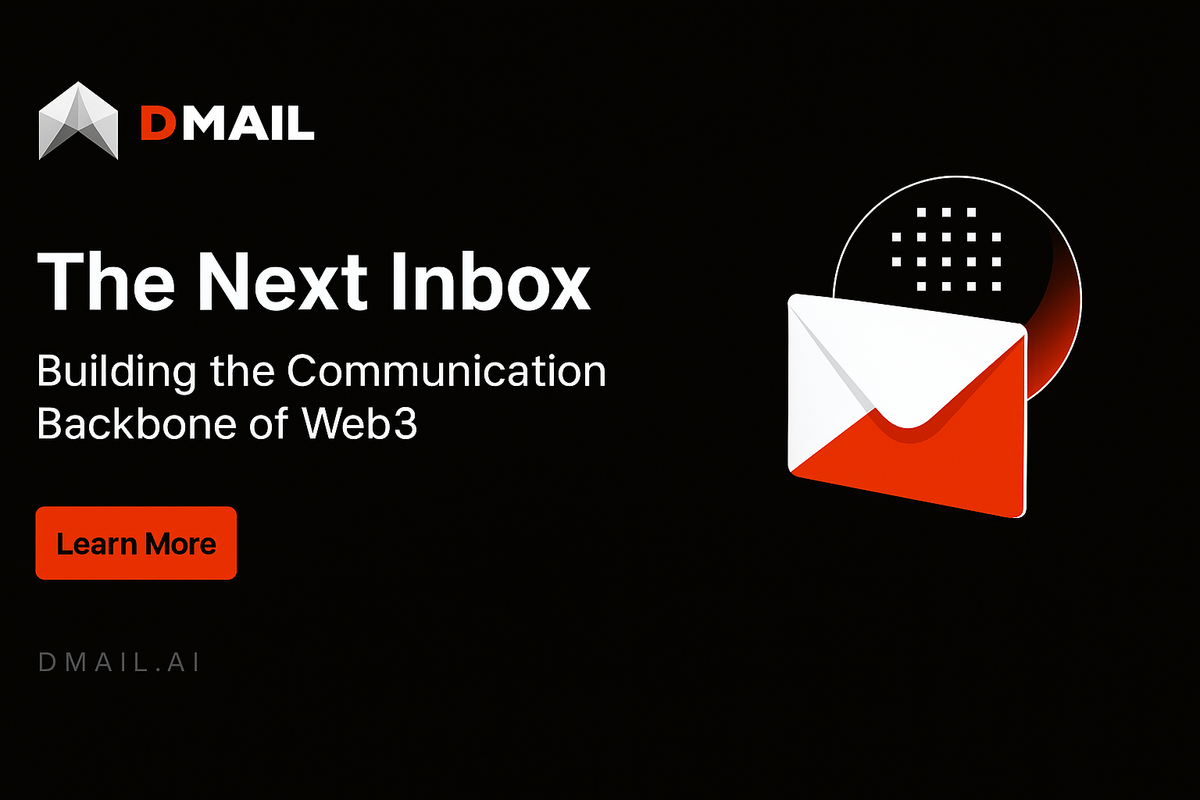The Next Inbox: Why Decentralized Communication Is the Real Consumer On-Ramp for Web3

For all the talk about mass adoption, Web3 still lacks something obvious: communication.
Every cycle, protocols promise scalability, new tokenomics, or improved UX. Yet none address the most fundamental element of coordination — how users and dApps actually talk to each other.
That’s the blind spot Dmail Network is solving.
1. Web3 Has a Communication Problem
Wallets can store assets, but they can’t receive information.
Airdrop? NFT mint? Governance vote? The user finds out through Discord, X, or Telegram — all Web2 tools sitting outside the chain.
This disconnect fragments trust and kills engagement.
Projects spend millions on marketing just to re-route users back to their own wallet ecosystems, all because there’s no native messaging layer for Web3 identity.
2. Enter the Decentralized Inbox
Dmail flips the model.
Instead of relying on email addresses or phone numbers, it attaches communication directly to your wallet address.
Every user becomes reachable through a verifiable, encrypted channel — DID-based email, owned by the user, not a platform.
That single shift rewires Web3 infrastructure:
- Projects can send transactional or behavioral messages on-chain.
- Users can manage identity and consent across chains.
- DAOs, DePINs, and protocols can coordinate with full auditability.
No intermediaries. No spam. No surveillance.
3. Data Ownership Meets Communication
The next frontier isn’t just token ownership — it’s data ownership.
Messages, notifications, and logs are forms of data. In Web2, they’re monetized. In Web3, they can be tokenized, encrypted, and stored under user control.
Through Dmail, communication becomes part of your on-chain footprint — permanent, portable, and provable.
In a future where data equals yield, your inbox becomes an asset, not a liability.
4. The Enterprise Angle
Enterprises moving into blockchain want two things: privacy and compliance.
Dmail’s architecture allows organizations to:
- Manage internal and external communication with encrypted audit trails.
- Integrate on-chain notifications into enterprise dashboards and smart contracts.
- Operate across multiple networks (Ethereum, BNB, TON, SKALE, Astar, etc.) without custodial control.
It’s the Web3 version of Outlook — except the user owns the mail server.
5. The Future of the Inbox
The next wave of decentralized products won’t just ask, “How do we transact?”
They’ll ask, “How do we communicate trustlessly?”
When your wallet receives an NFT, a loan liquidation notice, or a governance proposal, that message shouldn’t come from Twitter — it should come from the chain itself.
That’s the Dmail vision:
A universal, decentralized inbox — where communication is as native to Web3 as value transfer.

Connect with Dmail: Website | Twitter | Discord | Github | Telegram


Comments ()